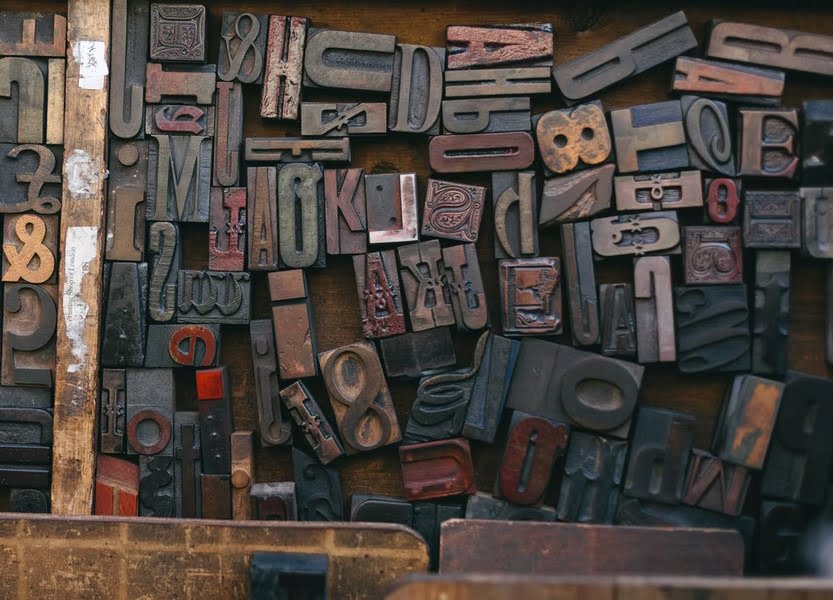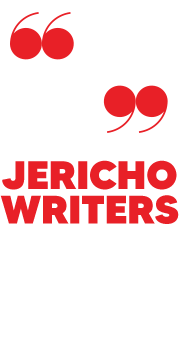Given the choice, would you rather see your name on the cover of an ebook or a paper book? Would you rather see your name in pixels or in print? Would you rather hold an amorphous concept of your book, cached away in an ebook reader or the actual physical object, you know, the one that allows you to feel the weight of your words?
Okay! I’m aware that I’m asking increasingly leading questions. Nor do I want to disparage ebooks as an effective route into self-publishing. But there’s still a romance and joy to seeing your words on an actual page. Not to mention the practical advantages of having something you can press into someone else’s hands, and even (if you’re feeling expansive) autograph for them.
Why Get Your Book Printed?
There are some big names that, as a self-published author, you may choose to publish under who will print and distribute for you. They tend to take a hefty cut from the sale price for themselves but do cover a large percentage of the hassle. Plus their print-on-demand service means you can have your book in your hands in a matter of days.
But what if you want to go at it alone and retain full control?
As a self-published author, the advantages of printing a book are clear. Although there are also obvious disadvantages. Most notably, while it doesn’t take too long for those self-publishing to find out how to create a decent and marketable ebook, book printing is a tougher and opaquer proposition.
There are several potential pitfalls and many important questions to answer before you can proceed with confidence. This article will give you the guidance you need to help you choose the best printing services.
What Are Book Printing Services?
Perhaps the easiest way to describe book printing services is to explain what they are not. They are not publishers. They do not (generally) offer the kind of distribution and marketing services you would expect from a conventional publisher, and they do not (generally, again) offer editorial advice. At the most fundamental level, a book printer’s job is to take your finished digital manuscript and turn it into a print copy.
That may sound straightforward, but the more you look into custom book printing the more questions you are likely to have. But before we get onto those, let’s answer a few basics.
Many (if not, most) self-published authors opt to print their books via Amazon. Their KDP service ensures distribution of ebooks, along with paperback and, more recently, even hardback options! Although they take a hefty cut from the sale price for themselves, it does cover a large percentage of the hassle and their print-on-demand service means you can have your book in your hands in a matter of days.
But some authors want more control – and more profit. A lot of what you decide to do will depend on the kind of printing you go for. There are two main methods of paperback and hardback book printing: print on demand and offset printing.
Let’s take a quick look at those:
Print On Demand Book Printing
As the name suggests, print on demand book printing is a form of printing where a book is produced once it has been ordered. Digital book printing technology enables printers to produce books in the exact quantity required with a rapid turnaround so that a customer can order a book on a website, or from a bookshop, and expect to have it within days.
It’s particularly useful for self-published book printing. It means you don’t need to worry about storage because you have no inventory. Printers are able to do single book printing, or many print several on demand books at once, depending on the orders that come in. On demand book printing services are also often integrated with sales and distribution channels, meaning your book is generally only a few clicks away from your potential readers. Importantly, there are also fewer upfront costs because once the files are loaded onto the printer’s system, the individual production cost for each book is absorbed at the point of sale. (Which is to say, the book printing cost is deducted from the sale price and you and the store get the remainder.) The most well known and reliable Print on Demand services are IngramSpark and KDP via Amazon. Let’s look into each of these options more closely.

IngramSpark
IngramSpark is a service that allows authors to self-publish print books and ebooks. There is lots of information on their website in order to learn more about self-publishing, help you choose the best printing option for your book, and how to create files for uploading your book.
The costs of uploading a book with IngramSpark:
- Print and Ebook – $49 (when uploaded at the same time)
- Print book only – $49/title
- Ebook only – $25/title
- They even have an option for you to see how much you will pay to print and ship orders directly to yourself or customers, based on the specifications of your book. This money will come out of the money earnt on the sold books, so consider this when pricing your book.
With global distribution, hardcover and/or paperback, a variety of print options, ebook and print book publishing all in one place, and online sales reporting, this is an excellent option for self-publishing authors. If you want to sell hard-copy books through every channel, then most authors prefer IngramSparks as they distribute to over 40,000 retailers and libraries globally, including Amazon.
Amazon Kindle Direct Publishing (KDP)
KDP is Amazon’s self-publishing and printing service, allowing authors to self-publish Ebooks, paperbacks, and hardbacks. They give you direct access to your book on Amazon, allow you to create a product detail page for your book, give you the option to expand your book’s availability on a global scale, and gives you full rights to your book
The cost of printing with KDP:
- Paperback – No upfront costs. KDP prints your book on demand and subtracts your printing costs from your royalties.
- Paperback printing costs are calculated based on the specifications of your book – page count and ink type – and which Amazon marketplace the customer bought your book from. You can estimate this using their calculator.
- Hardback – No upfront costs. KDP prints your book on demand and subtracts your printing costs from your royalties.
- Hardback will automatically be more expensive than paperback to print, but the printing costs are calculated in the same way, factoring in page count, ink type, and which Amazon marketplace the customer bought your book from. You can estimate this using their calculator.
Authors earn money from royalties, and KDP has a minimum list price so that your royalties earned are always enough to cover the cost to print your book. This means that you don’t need to part with any money. KDP also offers different types of sales reports, so you can track how many books you have sold, how much you have earnt from it, and much more. As KDP only allows you to sell on Amazon it is not ideal for authors wanting to sell on multiple platforms, but if you’re selling exclusively on Amazon, then this service would be perfect for you.
Disadvantages of Print on Demand
Most self-published authors find that this kind of custom book printing works best for them. But there are some disadvantages. Digital technology has improved a lot over the past few years, but it’s still much harder to guarantee good quality book production with print on demand. The differences are often small, but noticeable: the paper can look too bright white, the definition of the ink on the pages can be wrong, the pages can feel weirdly smooth, a few books come out that aren’t properly aligned. There’s also the issue that if you start selling in big quantities, for instance, it can make sense to move to offset printing since the unit costs are generally lower.
Let’s look at that now.
Offset Book Printing
Offset book printing is the form of printing that traditional publishers generally use, whereby you order a set quantity of books – ranging from the low hundreds to hundreds of thousands. These are all produced at once, in one print run and the more you print, the more the unit cost comes down.
These savings on book printing prices can be significant, but you have to balance them against the potential problems relating to storing and distributing the books, fluctuations in demand over time and the horror of paying a lot of money upfront and not being able to shift enough units to cover your costs.
Offset printing can make sense for self-publishers who have a shop eager to buy large quantities of their work. It might also be a good solution for people who have a steady book-selling outlet, like public speakers who can make a tidy income from bookstalls at the back of the room or at events.
But most self-publishers should approach it with caution.

How To Choose The Right Book Printing Service
Talking of caution, it isn’t altogether easy to choose the best book printing services. There are a lot of different online book printing services.
It’s hard to make the right choice and to know how to protect both your hard-earned money and the quality of the book bearing your name.
There are, however, several useful things you can consider when weighing up your options. It’s important to give serious thought to which service provider will work best for you. Don’t rush into anything. Do make sure you’ve done your research. And, crucially, ask the right questions.
What Should I Be Asking?
The first question you’ll probably be asking will be about the book printing cost and various book printing services. But there are plenty of other things to ask. You will need to know what is the turnaround time? What kind of binding will work for your book? (Hardback? Paperback? Or maybe even spiral or wired binding?) What kind of paper will it be printed on? How much do you want to spend on paper quality? Will the cover be on good paper stock? Will the images be printed at the right resolution? Do I need a matt or gloss finish? How much control do I have over the size of the pages and layout? What file format should I use? Where does the paper come from? Is it responsibly sourced? What other environmental impacts will the printing have?
You may also want to consider if you want to use the services of a printer experienced in the genre of book you have written. Do you need a printing service that provides integrated sales and distribution? What level of interaction and customer service do they need from the printers?
The tricky thing here is that many of these questions quickly start to have very technical answers. You might soon discover, for instance, that you’ll also need to employ a professional typesetter to get your words looking good on the page. You might also need a cover designer who can properly discuss ink colours, embossing and different finishes with the printers.
Worse still, since this is your book, and your project, there are perhaps also quite a few questions that only you can properly answer. And then, there are also the restrictions of your budget and the returns you hope to get back from your book. I understand the desire to have a book printed on vellum and bound with leather – but it isn’t generally the most practical option, unless you’re going for a very special kind of one-off book printing.
Evaluating Book Printing Services
I’m aware that I’ve given you a lot of questions and not quite as many answers. But these questions are the ones that will help you narrow down your choices.
The important things to think about are how well your prospective printer will be able to handle your queries and how well they will be able to produce the finished book according to the specifications you give them.
It’s also vital to thoroughly evaluate book printing services before making a commitment. Look at plenty of examples of books previously printed. If you can order copies so you can see the finished item. Examine the services printing rates/costs per unit. It’s also a good idea to ask other authors about the service and check on writer forums for good tips. (Naturally, we recommend Jericho Writers Club).
The world of book printing online and on demand publishing is also fast-changing, so check how long your printer has been operating and make sure they have a decent reputation for delivery and quality. Also, remember that you’re the customer and most printers will want to help you and answer your queries so put your questions to them.
- Do they provide sales and distribution?
- What is their turnaround time?
- Do they do hardback as well as paperback book printing?
The answers to the queries you make will also help you gauge the other crucial question about what level of customer service your printer provides. If they’re good at helping you, they’ll also hopefully be good at bringing your book into the world.
Finally…
After all that, I hope you still want to see your name on the cover of a paper book. I can’t pretend that it’s an easy process. You have to be very aware of costs, quality and the importance of making sure that your chosen service can meet your specifications.
But the joy of holding a beautiful copy of your own book in your hands will make it worth the hard work. It’s a happiness all writers deserve.
Jericho Writers is a global membership group for writers, providing everything you need to get published. Keep up with our news, membership offers, and updates by signing up to our newsletter. For more writing articles, take a look at our blog page.











